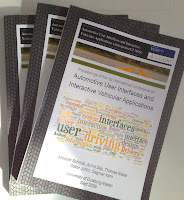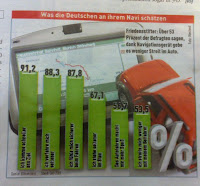 The proceedings of the 1st International Conference on Automotive User Interfaces and Interactive Vehicular Applications (AutomotiveUI 2009) [1] are freely available on the conference website and in the ACM digital library (see the table of contents of the proceedings). We created a printed version of the proceedings and it seemed that a lot of participants used it during the conference – so paper seems to have still a value (at least to some of us).
The proceedings of the 1st International Conference on Automotive User Interfaces and Interactive Vehicular Applications (AutomotiveUI 2009) [1] are freely available on the conference website and in the ACM digital library (see the table of contents of the proceedings). We created a printed version of the proceedings and it seemed that a lot of participants used it during the conference – so paper seems to have still a value (at least to some of us).
 We decided to pursue an open policy for disseminating the proceedings. The authors keep the copyright of their paper and the authors grant the ACM digital library and the conference to distribute the electronic version over the web site (and as printed book and on a USB-Stick in car-shape). We think this approach maximizes the exposure and hence is good for the community. We are happy that the ACM agreed to this model!
We decided to pursue an open policy for disseminating the proceedings. The authors keep the copyright of their paper and the authors grant the ACM digital library and the conference to distribute the electronic version over the web site (and as printed book and on a USB-Stick in car-shape). We think this approach maximizes the exposure and hence is good for the community. We are happy that the ACM agreed to this model!
- AutomotiveUI 2009 Proceedings (pdf, 12MB)
- AutomotiveUI 2009 Adjunct Proceedings (pdf, 500KB)
If you are interested in the conference and you want to be updated please register for receiving information on future conference.
[1] Albrecht Schmidt, Anind Dey, Thomas Seder, Oskar Juhlin, Dagmar Kern. Proceedings of the 1st International Conference on Automotive User Interfaces and Interactive Vehicular Applications (AutomotiveUI 2009). Essen. Germany. 21-22 Sept. 2009. (table of contents of the proceedings in the ACM DL)






